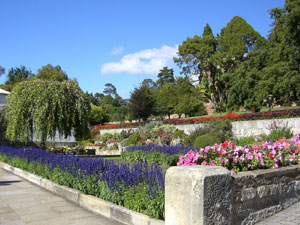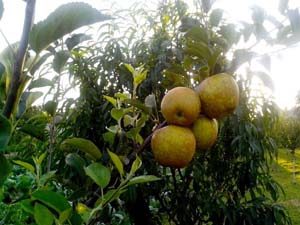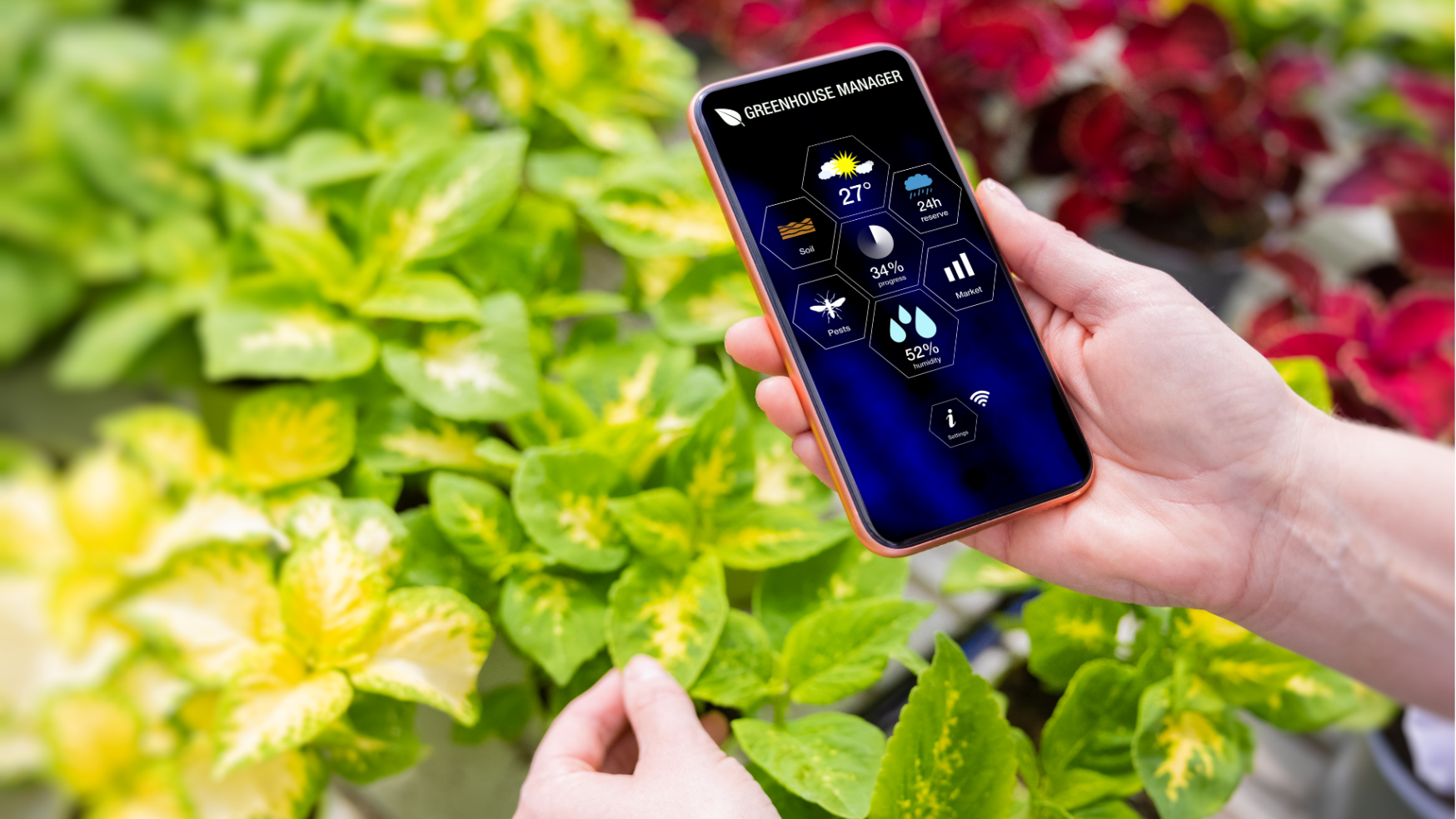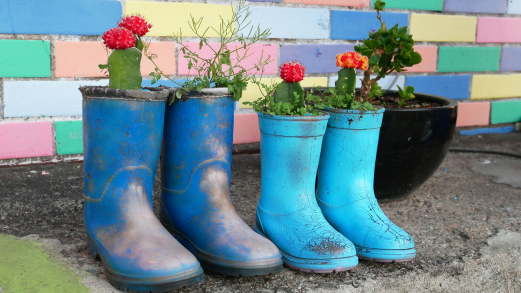Few things can be quite as satisfying as growing your own vegetables, herbs and fruit. The quality and freshness of home grown produce combined with the peace of mind of knowing which fertilisers and chemicals have been applied has become an important issue to many people.
Thoughtful planning before you plant can save you months or even years of wasted effort!
You may wish to develop a purely functional layout using formal beds and planting rows, or alternatively formulate a more integrated planting design, which combines vegetables, herbs, fruit and ornamental plants. Many techniques or philosophies ranging from organic gardening to biodynamics, permaculture, and companion planting have become increasingly relevant and popular with today’s home gardener.
Edible gardens don’t have to be large, even a few pots on a balcony are enough to grow herbs and veggies. With many dwarf varieties available, even the smallest space can be used to grow tasty food including fruit.
Garden Styles
It is important consider the type or style of garden you want before construction begins in earnest – and even draw it up on paper.
 Kitchen Garden
Kitchen Garden
This is a traditional walled, fenced or courtyard garden. The fences or boundary hedges can provide protection from wind and north or west-facing masonry walls can assist plant growth by holding daytime heat and radiating it at night.
Potager Garden
A more romantic, decorative vegetable garden which includes flowering plants – sometimes confused with the Kitchen Garden.
Permaculture Garden
An organic garden which uses Permaculture principles for fertility and pest and disease control mimicking the way Nature does things. Such a garden has less emphasis on aesthetics.
Free Style Garden
A combination of some of the above. In reality, it is this style which is most common. Most of us don’t start from a cleared block of relatively flat land, and even if we do, we may want to include shrubs, trees and decorative flowers. It is possible to apply permaculture principles to some or all of your garden, or to enclose just a portion of the garden with a wall, fence or hedge. It is also possible to intersperse vegetable beds with beds of roses, dahlias, asters and the like and to grow flowering shrubs along boundary fences.
Choosing a Style
Factors that will affect your choice will include:
- Relative importance of appearance and gardening approaches
- If you like straight rows and regular squares or circles for your garden beds, a wholly permaculture garden is probably not for you. But you could still incorporate some aspects such as “use and value diversity”.
- The amount of time available to devote to upkeep and maintenance
- If you are time-poor, just a few veggies and perhaps just a small number of fruit trees might be a good choice. An easy-to-care-for potager or structured kitchen garden can be achieved in either a small or large section of your land. See more at the end of this page.
- The amount of usable space at your disposal
- Steeply sloping land, building cover as well as the size of your “block” will be important in deciding what to plant where. However, it is possible to grow some produce on a small balcony or even inside the house.
- Growing habits of productive plants
- Most garden vegetables are planted on an annual basis (either for cool or warm season growth) however, many plants including rhubarb, guavas, artichokes, strawberries, cane berries and asparagus survive for many seasons and, along with fruit trees, should be considered as permanent plantings.
- The suitability of the available space in terms of soil and microclimate – see more below.
- How to include other useful plants
- There are many herbs that you might want for culinary use such as thyme, oregano, parsley, mint and rosemary. They have other important features too – their flowers are excellent for attracting bees and other beneficial insects which help in pollination or in controlling pests. Take care though with herbs which become invasive such as mints (including Vietnamese mint) and horseradish. They are best grown in pots.
- You might want some of the dozens of other herbs which have beneficial uses. For example, lemon verbena and lemon balm are useful for making teas and additionally provide colour, fragrance and attract insects. Other plants such as the wormwoods and scented geraniums can be useful in repelling harmful insects. Most of these can contribute to permanent plantings. In a potager style they could be grown as hedges to frame and protect the vegetable area.
Important Requirements
Soil
The soil forms the basis of a productive garden. It provides oxygen, water and nutrients to the plant roots, necessary for their growth. A productive soil should have good structure, be well drained, and be rich in compost and manure. If your soil is not like this you may need to postpone planting while you add compost, manure and/or grow some nitrogen-fixing crops such as mung beans, chick peas or lupins then cut them down and dig them in as green manure.
The addition of organic manures and compost is fundamental to the success of vegetables and fruit trees. Organic matter provides nutrients for plants as it is broken down by soil micro-organisms eventually forming part of the humus layer in the soil. This greatly improves soil structure leading to better drainage, oxygen availability, water retention and nutrient holding capacity.
A compost-rich soil is ideal for growing healthy vegetables. It will encourage a large worm population, supply ample nutrients, good soil structure and drainage. Composting is also excellent as it can recycle most kitchen leftovers as well as garden waste.
If your soil is hard clay or almost pure sand you could include raised beds by constructing edging and importing soil from elsewhere. Or no-dig beds or wicking beds could be useful alternatives.
Sun
It is important that fruit and vegetables receive sufficient sunlight for their growth requirements. Vegetables grow quickly and need sunlight for photosynthesis to produce the energy needed for this growth. Northern aspects are ideal for a produce garden with beds running roughly in a north – south direction. At least 4 to 5 hours direct exposure to sunlight a day is recommended for most fruit and vegetables. Some say 6 hours. But don’t forget that there are some vegetables that don’t mind shade.
Water
Regular watering is also essential for successful fruit and vegetable crops. Water is a precious resource so think about installing a rainwater tank or a grey water system which re-uses laundry water.
Rainwater may be limited by the season (i.e. summer) but grey water is available every time the washing machine is used! Water flow can be regulated to the garden by using soaker hoses or installing irrigation systems.
Mulch
Mulches play an important role in the produce garden. A layer of pea or lucerne straw mulch will retain soil moisture, protect plant roots from summer heat, return organic matter to the soil, keep fruits off the soil surface and reduce the incidence of weed competition. Sugar cane mulch can be used, but is not as useful in providing a little extra nitrogen.
Vertical Structures
Your garden will almost certainly have a boundary fence. It may also have walls of the house, shed or garage. Although they will produce shady areas, some will be really useful for supporting cane berries, passion fruit, chocos, grapes, pumpkins, kiwi fruit, cucumbers and tomatoes. Alternatively, your plan should consider how you will provide support for these edibles if you wish to grow them. For some, such as cucumbers, a movable or demountable support is useful since they are best when not be grown in the same place in subsequent years.
Remember too, that fruit trees can be espaliered on fences, but also on trellises which you could construct anywhere in the garden. Espaliered fruit trees are very productive and take up much less space in your garden.
Maintenance And Care
Planting times will vary for different vegetables, herbs or fruits depending on their growing seasons. Generally speaking warm season vegetables are planted out in spring and cool season vegetables planted in autumn. Fruit trees, vines and shrubs, and some root crops are planted in winter. It is essential to plan ahead and ensure space is available throughout the year for different annual vegetables.
The presence of weeds in produce gardens is undesirable. Weeds compete for valuable resources and may attract or harbour pests and diseases. Proper mulching of the garden will significantly reduce the weed load. However, you need to be prepared to spend some time removing those that continue to grow – and, if they have not gone to seed, perhaps composting them.
Pests and diseases are a natural part of the plant kingdom and it is not possible or desirable to totally eliminate them. Gardeners should aim to achieve a balance of pests and predators, in which pest numbers do not jeopardise crops, but still provide a food source for the predators such as birds, spiders and predatory insects. Healthy soils and sensible planting and watering also help reduce the incidence of pest and disease.
Crop rotation helps to maintain a healthy soil profile and minimises the transfer of disease from one crop to another. There are many systems of rotating crops, some based on the families that vegetable belong to, others based more on nutrient requirements. It is a good idea to periodically leave some areas fallow (nothing planted) or plant a green manure crop that is dug into the soil. Click here for more information.
 Fruit trees, shrubs and vines will need periodic pruning. Most fruit trees will require summer and winter pruning to produce a good crop of fruit each year. The structural pruning is carried out in winter to form the framework of the tree. In summer, water shoots and upright branches are either pruned back or trained down horizontally, to encourage fruiting over stem growth.
Fruit trees, shrubs and vines will need periodic pruning. Most fruit trees will require summer and winter pruning to produce a good crop of fruit each year. The structural pruning is carried out in winter to form the framework of the tree. In summer, water shoots and upright branches are either pruned back or trained down horizontally, to encourage fruiting over stem growth.
Probably the most important factor in planning for a produce garden is to be realistic about the time you are able to spend on the garden once it is planted. We suggest that, for a successful garden, you need to spend a few minutes every few days to check on what is happening it it – after all it is alive! These frequent short visits will enable you to:
- Harvest vegetables, herbs and fruit.
- Check the health of the plants. Do not leave old fruit, vegetables and pruning material underneath the plants as these can harbour disease – compost this material, unless the plant has a disease.
- Monitor weed growth – and pull a few out.
- Check soil moisture.
- Do minor pruning to keep shrubs and trees in shape.
- Check if nets are needed to protect fruit or veggies them from birds, rats, possums (please use very fine netting which will not trap anything)
- Enjoy the fresh air, sunshine, the hum of insects and the songs of birds!
Related Articles:
Citizen Science: A Pathway to Gardening Success and Biodiversity Conservation
In recent years, the realm of science has experienced a remarkable transformation, one that invites people from all walks of life to participate…
A Sustainable Gardener’s Guide to Thrifty Gardening
Creating an eco-friendly and cost-effective garden involves more than just nurturing plants; it's about adopting a sustainable approach that…




